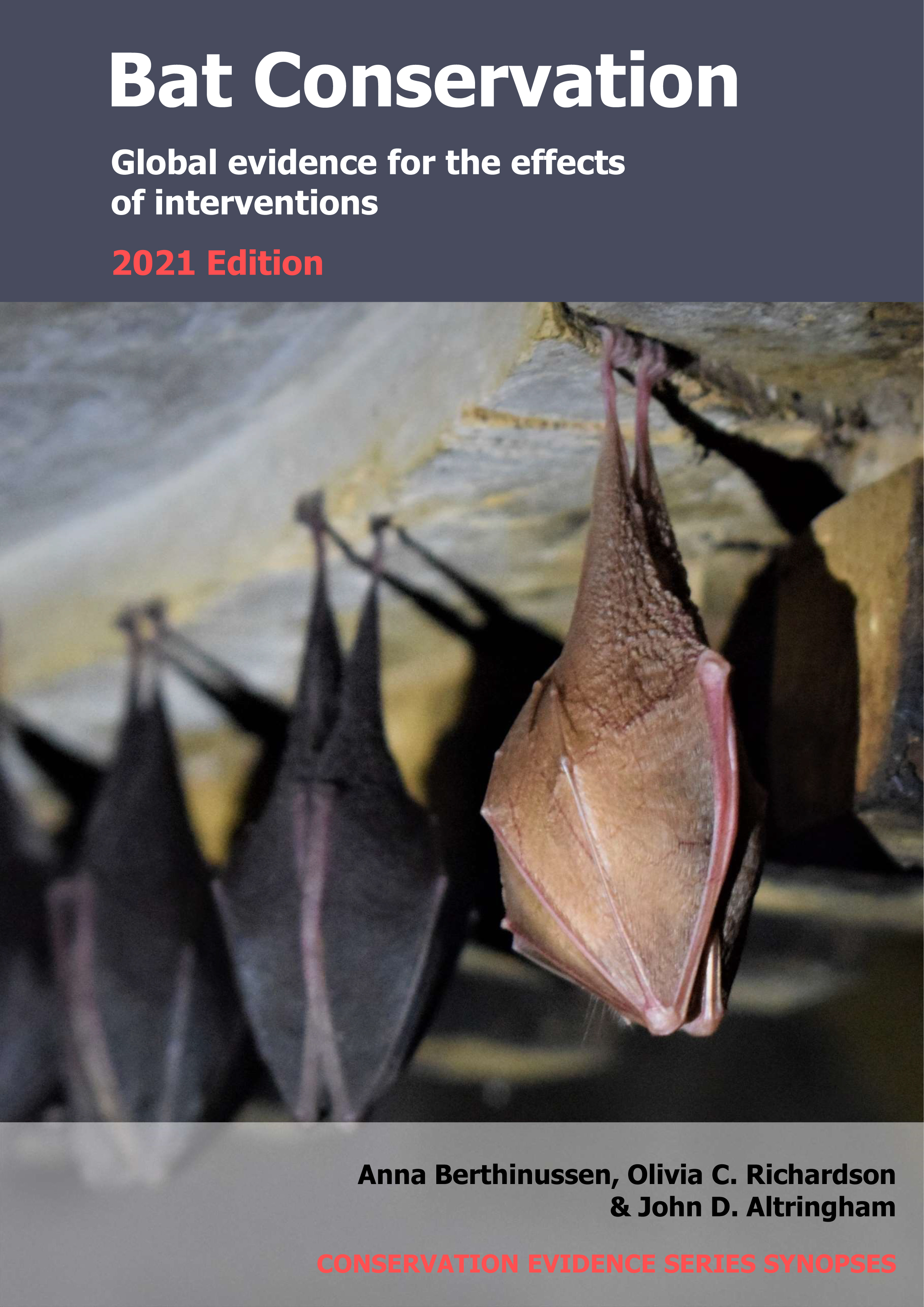Control invasive predators
-
Overall effectiveness category Likely to be beneficial
-
Number of studies: 1
View assessment score
Hide assessment score
How is the evidence assessed?
-
Effectiveness
80% -
Certainty
40% -
Harms
0%
Study locations
Supporting evidence from individual studies
A replicated, before-and-after study in 1993–2015 in a rainforest in Eglinton Valley, New Zealand (O'Connell et al 2017) found that ship rat Rattus rattus control resulted in increased survival probabilities of female bats within three long-tailed bat Chalinolobus tuberculatus colonies. Average annual survival probabilities for both adult and juvenile female bats were higher in years with rat control (adult female: 0.82; juvenile female: 0.76) than without (adult female: 0.55; juvenile female: 0.55). Population trends were positive for all three bat colonies when rats were controlled, and negative for when rats were not controlled (data reported as statistical model results). Rats within the roosting ranges of all three bat colonies were poisoned using bait stations in 2006–2009 following high beech Nothofagaceae spp. seedfall and an increase in numbers. Bats were captured annually during the breeding season over 22 summers in 1993–2015 (average 6–8 captures/colony/year). Mark-recapture data were used to calculate survival probabilities.
Study and other actions tested
Where has this evidence come from?
List of journals searched by synopsis
All the journals searched for all synopses
This Action forms part of the Action Synopsis:
Bat Conservation
Bat Conservation - Published 2021
Update 2020





)_2023.JPG)














